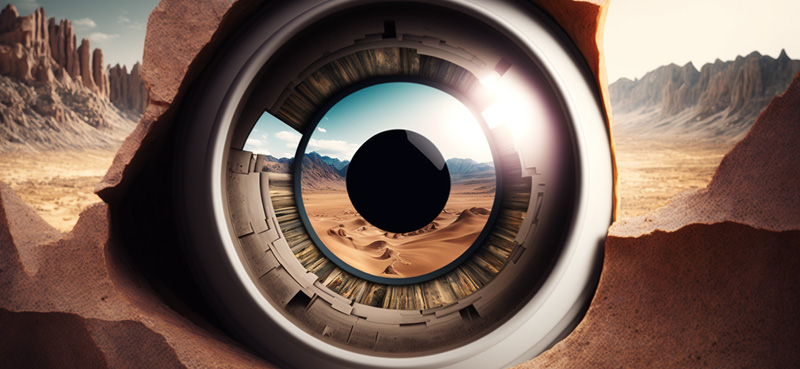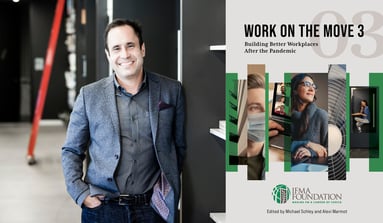AI and experience – what’s real?

Organizations are feeling pressure to embrace new technology, and ultimately they will be forced to forge a new direction. David Waingarten, Rick Waritz, and Trent Hays of Downstream Unispace share the promises (and pitfalls) of AI and how to harness its potential to design and create better spaces.
*No LLMs or AIs were used to write this piece.
Harnessing AI for good
It took Netflix a decade to hit 100 million users. Chat-GPT reached that same milestone in just 60 days. The AI genie isn't just out of the bottle, it's challenging and transforming many aspects of our daily lives with staggering velocity.
Many of us have crossed this rubicon unwittingly. We didn't realize this professional ride we've been on was going to suddenly include everything from websites that turn words into images, to emails that can write themselves, and apps that offer to attend meetings on your behalf.
Now that AI is part of our consumer and popular consciousness, it has so many magic tricks to show us and the race is on to rapidly monetize and market them all.
But what do we really want out of this genie? If it's as powerful a force as it appears to be, shouldn't we wish for more than just generative eye candy and task efficiencies?
As designers, consultants, and creative service providers, our clients look to us for answers, clarity, and direction. They want us to be experts — to shine a light and find a way through complexity and ambiguity toward inspiring, actionable solutions that offer them ongoing value.
As creatives being entrusted with some of our clients most critical business assets - their brands, stories, culture, and workspaces - we take our role in this partnership very seriously. So how do we help lead our clients through a sea change we ourselves don't truly understand yet?
The answer, we believe, is not to seek answers, but to instead ask the right questions. To get curious and explore with a sense of purpose, rather than urgency.
We believe curiosity is the most creative and luminous part of our human intellect; a raison d’etre no AI can replicate. It's the central, animating force of our creative practice, the gateway to learning, and the wellspring of new ideas. So what if we slow down and ask the right questions? What if - instead of focusing on how to use AI or what we can do with it – we ask why we're using it in the first place?
The following statements are just the beginning of a conversation with ourselves (and all of you) about AI and what it might mean to us; as creative professionals, as citizens, as parents, and as a species.
Starting the conversation
- Motives matter. AI can be used as a cheat code or a virtual version of single-use plastics. It’s up to us to deeply consider not just what we can make with these tools, but why we’re using them in the first place.
- AI isn't a blank slate. It's a mirror. It’s been trained using everything we make as a society, which means it (unconsciously) carries all our societal biases.
If we’re not consciously prompting it toward deeper inclusivity, AI will reflect and perpetuate the same systemic inequities we face in real life. - Your outputs are only as good as your inputs. Giving good prompts is like giving good directions. It’s critical to getting where you want to go.
When we treat AI like a self-driving car, we’re on the road to perpetual meh. - Curiosity can't be replicated. AI offers us incredible efficiency in generating ideas and answers.
While these may be cool and useful, they are far less critical to our species’ evolution and survival than asking the right questions. - Creativity is a gift. Mastery is a practice. We are all capable of being creative. Some of us build skills and practice for decades to share this gift with others. We open the gift by doing more than just thinking about things. We open the gift when we make.
The mind-body connection of making is something AI cannot and should not be a proxy for.
Efficiency? Check.
Mastery? Please grab your pencils. - We owe the future more than just "cool toys". AI technologies are evolving incredibly fast. Far faster than our collective understanding and agreements about its role in our society. Future humans need our guidance and help establishing fundamental ethical frameworks. We will be the wise elders. Let’s step up.
- Nothing will ever replace mindfulness and listening.
(Aka being a caring human>
We invite you to explore this strange territory with us. By asking the right questions (including interrogating our own motives), we can lead by example and use AI in ways that are both transformational and ethical. Let’s tell stories and design experiences and spaces that change how we interact with the world and each other. Let’s help current and future generations point AI at what matters most and use this computational potential to solve the planet’s most complex and intractable challenges. Those are wishes worthy of the genie we’ve released.
Learn how we're leveraging AI to create branded environments for our clients.
Connect with the authors
David Waingarten, Creative Director, Strategy
Rick Waritz, Vice President, Strategic Accounts
Trent Hays, Technical Principal, AV Engineering
Follow Downstream on LinkedIn for more experience design insights and thought leadership.


